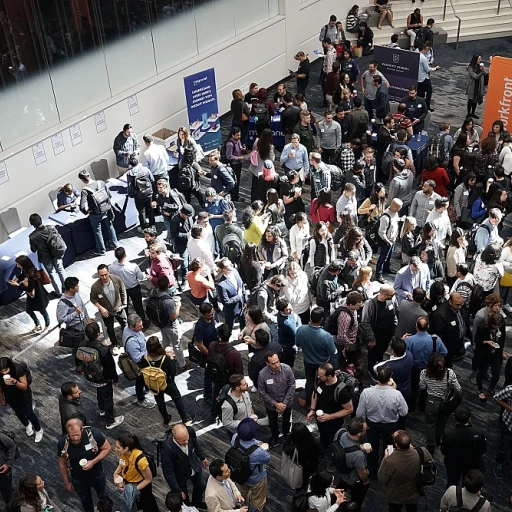
Defining a Metacity
The Expanding Realm of Metacities
The notion of a metacity, or 'meta city', marks an unconventional yet fascinating shift in the urban landscape. A metacity transcends the traditional boundaries of urban areas, embracing vast expanses where populations and ecosystems merge. This modern architectural marvel is characterized by its integrated patch dynamics, where cities are seen as expansive ecological patches rather than isolated urban islands.
Delving into the dynamics of metacities compels us to rethink urban design and management. These vast networks are sprawling entities that demand innovative approaches to urban planning, incorporating long term ecological strategies to harmonize human activities with ecology urban. In this context, Baltimore serves as a significant point of reference, with its ongoing efforts to integrate ecology with urban living, shaped by a holistic conceptual framework.
Adopting the metacity concept also means embracing complexity, not only in terms of infrastructure but socially as well. As the population of cities continues to swell, questions arise about how these mega-systems will sustain such growth, both ecologically and socially. The mcgrath pickett studies suggest new design challenges and opportunities for conceptualizing urban systems, reflecting a shift in understanding the interaction between humans and their environment.
For those keen on exploring further, understanding the essential elements for building a metacity provides a more comprehensive insight into how these complexities can be managed effectively.
Impact on Employment
Shifting Employment Landscapes in Metacities
The rise of the metacity concept is reshaping the employment landscape in unprecedented ways. As urban areas evolve into sprawling metacities, the integration of technology and ecology becomes a cornerstone of urban design. This transformation brings both opportunities and challenges for the workforce.
In metacities, traditional job sectors are being redefined. The demand for roles in technology, urban management, and ecological systems is increasing, driven by the need to support large populations and complex infrastructures. The architecture of a metacity requires a workforce skilled in integrating ecology and urban design, reflecting the shift towards sustainable and resilient cities.
Moreover, the concept of patch dynamics, which involves understanding the spatial and temporal changes within an urban ecosystem, is crucial for employment in these environments. This approach, often seen in studies like the Baltimore ecosystem, emphasizes the need for expertise in managing dynamic urban patches. As a result, jobs in ecological management and urban planning are becoming more prominent.
However, the transition to a metacity framework also presents challenges. The shift requires workers to adapt to new technologies and systems, necessitating continuous learning and skill development. For instance, the integration of digital interfaces and smart city technologies demands proficiency in managing digital ecosystems.
As metacities continue to develop, it is essential for individuals and organizations to prepare for these changes. Understanding the evolving job market and acquiring the necessary skills will be crucial for thriving in this new urban paradigm. For more insights on how technology is influencing work environments, explore the role of virtual reality in the workplace.
Technological Integration
Integrating Innovative Technology into Urban Environments
The fusion of technology with urban spaces is a defining characteristic of metacities. As we look at how cities will adapt to future challenges, the role of technological integration cannot be overstated. These dynamic systems allow for seamless interaction and management of urban patches, maximizing resource efficiency and improving the quality of life for inhabitants. Metacities are poised to utilize advanced technology in ways that challenge conventional urban design. The conceptual framework of metacities positions technology as a core component in addressing complex ecological urban issues and facilitating effective population management. In fact, innovative interface systems can provide a platform for enhanced decision-making processes. Technology-driven change also brings challenges to the management of social and ecological systems. There's a need for sustainable design approaches that incorporate concepts of patch dynamics and ecology urban thinking. The use of smart technologies, such as sensors and data analytics, provides real-time insights into urban conditions, supporting the long-term management goals for sustainable urban living. Moreover, ecological considerations are integrated into the planning processes of metacities. This integration is essential to ensure that cities like Baltimore can adapt to environmental changes and support diverse populations without compromising ecological integrity—a notion expressed in the urban design and architecture of a metacity. For professionals exploring innovations within urban environments, engaging with these technologies can offer insights into how integrating innovative technology can revolutionize the future management and design of urban spaces. As we progress, the challenge lies in creating open-access systems that harmonize technological growth with ecological and social balance.Urban Living and Sustainability
Ecological Connections and Urban Adaptations
Urban living in the realm of metacities presents a unique opportunity and challenge. The design and framework of these environments necessitate a harmonious blend of architectural considerations and ecological mindfulness. Recognizing the dynamics within urban settings, it becomes essential to develop sustainable systems that accommodate the growing population. This includes the integration of conceptual frameworks such as patch dynamics, which advocate understanding cities as interconnected patches. Integrating ecology into urban design offers perspectives that facilitate better management of the Baltimore ecosystem and similar urban landscapes. Ecological urban approaches emphasize the long-term benefits of balancing human activity with nature. The evolution of metacities can be viewed as an intriguing social experiment, enabled by frameworks that align ecological integrity with urban interfaces. Concepts like the metacity and meta city variations provide insights on balancing built environments with nature, ensuring sustainability in an ever-changing urban ecosystem. Design challenges arise when envisioning this balance, often requiring innovative architecture that respects ecological principles while serving a dense urban population. Effective urban management not only addresses ecological concerns but also considers social and economic factors. This enhances resilience and adaptability, ensuring cities not only grow but thrive amid increasing pressures. The introduction of systems thinking, as fostered by the metacity conceptual framework, nurtures a vision of cities that are both green and dynamic. Addressing these open access challenges requires collaboration across disciplines, fostering an exchange of ideas between urban planners, ecologists, and local communities. In essence, the metamorphosis of cities into metacities necessitates a keen understanding of the interplay between ecological systems and urban design. This adaptation is vital to seamlessly transition into a future where urban and natural realms coexist in perpetual balance.Social and Economic Implications
Urban Dynamics and Population Shifts
The emergence of the metacity concept marks a significant evolution in urban development, demanding adaptability in social structures and economic frameworks. As urban design strategies incorporate patch dynamics and ecological systems, cities must navigate the complexities of integrating ecology and urban management. This urban interface necessitates a restructuring of social management to accommodate ever-growing populations, with city planners and policymakers facing challenges in understanding ecology urban impacts on society. Urban living in a metacity is a dance between human-centric designs and ecological harmony. This dynamic environment requires a balance in architecture city approaches where the design challenges remain responsive to long-term ecological needs. By applying lessons from the Baltimore ecosystem study, we can better understand the necessity of integrating ecological considerations into every facet of urban expansion. Socially, a metacity framework demands inclusivity, equitable access to resources, and enhanced social networks. These elements are essential to building resilience in urban populations, who may face significant economic changes due to job redistribution and changes in urban employment patterns. Economically, metacities could serve as catalysts for innovation hubs and economic diversification. The conceptual framework calls for city administrations to employ strategic planning that incorporates economic stability while maintaining ecological balance. By addressing these dynamics, the future metacity becomes not just a hub of population density but a thriving, ecologically aware ecosystem. Economic resilience will hinge on embracing change management strategies that anticipate the varied needs of growing urban populations. As cities evolve, the ability to adapt to shifts in the social and economic landscape will become a vital factor in sustaining urban living standards in the metacity era. The combination of these efforts will determine the success of the metacity as a model for future urban ecosystems.Preparing for the Future
Strategizing for Urban Evolution
As we delve into the future of work within the framework of metacities, it becomes crucial to strategize effectively for urban evolution. The concept of a metacity, with its vast population and dynamic systems, demands a comprehensive approach to management and planning. This involves integrating ecology with urban design to create sustainable environments that cater to the diverse needs of growing populations.
Embracing Technological Advancements
Technological integration is pivotal in shaping the future of metacities. As highlighted earlier, cities are becoming more reliant on technology to streamline operations and enhance the quality of life for their residents. Embracing advancements in technology can facilitate better management of urban ecosystems, enabling cities to adapt to ecological challenges and improve their resilience.
Fostering Social and Economic Resilience
Understanding the social and economic implications of metacities is essential for preparing for the future. By adopting a conceptual framework that incorporates patch dynamics and ecological principles, cities can foster resilience and adaptability. This involves addressing social inequalities and ensuring equitable access to resources, which is vital for maintaining harmony within urban populations.
Innovative Urban Design and Architecture
Urban design and architecture play a critical role in the evolution of metacities. The architecture of a city must reflect its ecological and social dynamics, promoting sustainability and inclusivity. By integrating the principles of the metacity concept into urban planning, cities can create environments that are not only functional but also conducive to long-term ecological balance.
Collaborative Approaches to Urban Management
Finally, preparing for the future of work in metacities requires collaborative approaches to urban management. Engaging with stakeholders from various sectors, including government, business, and civil society, is essential for developing effective strategies. This collaboration can lead to innovative solutions that address the complex challenges faced by metacities, ensuring their viability and prosperity in the long term.












